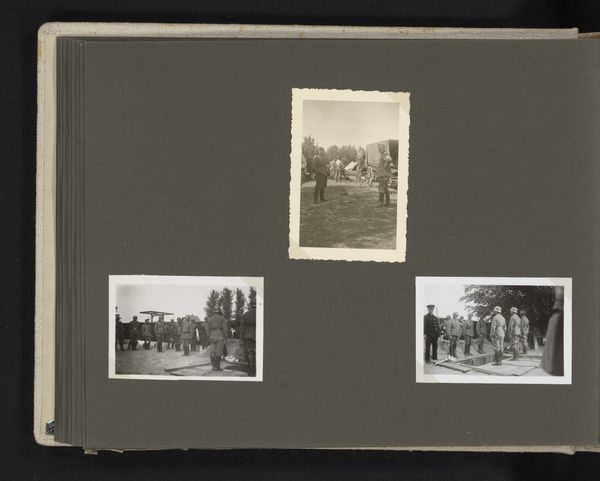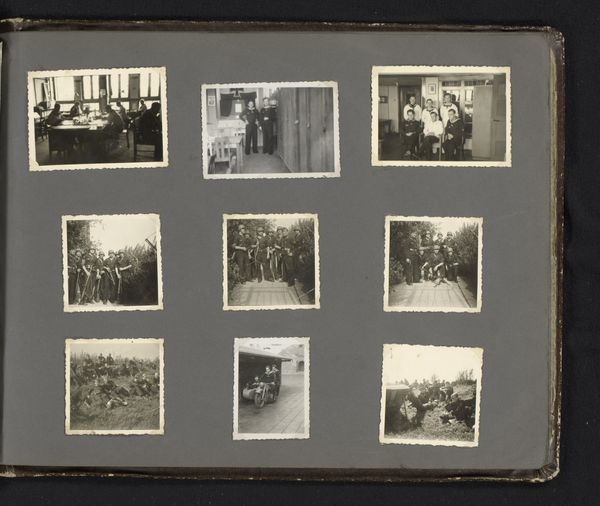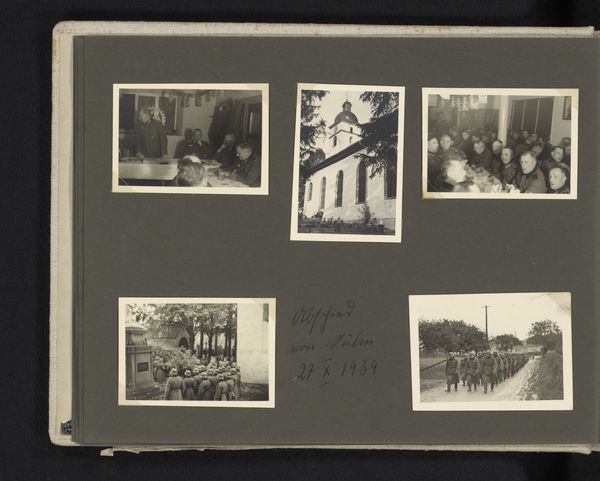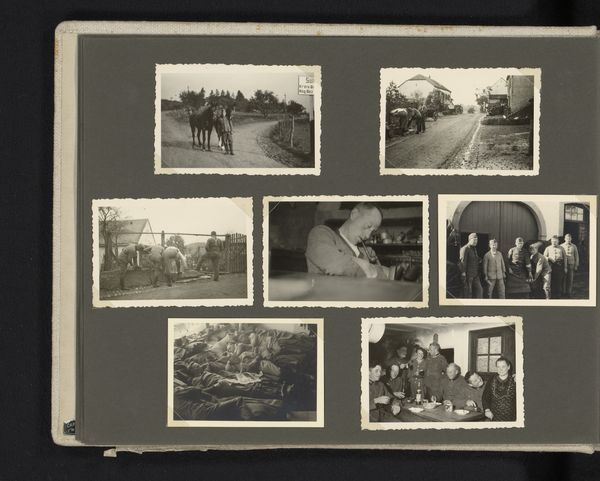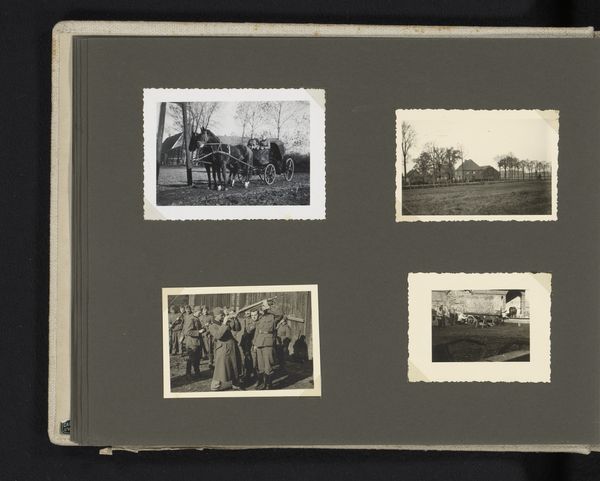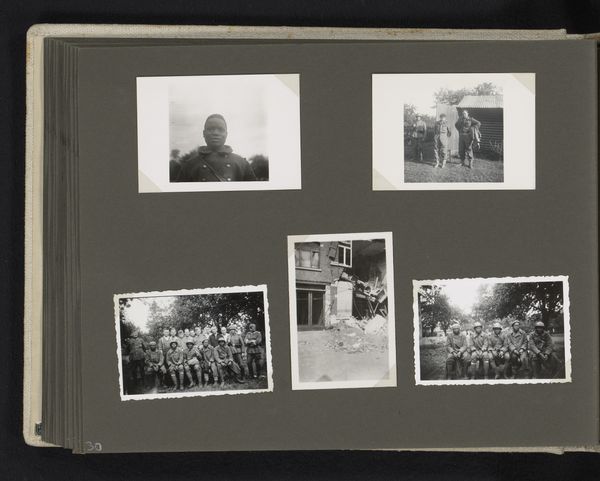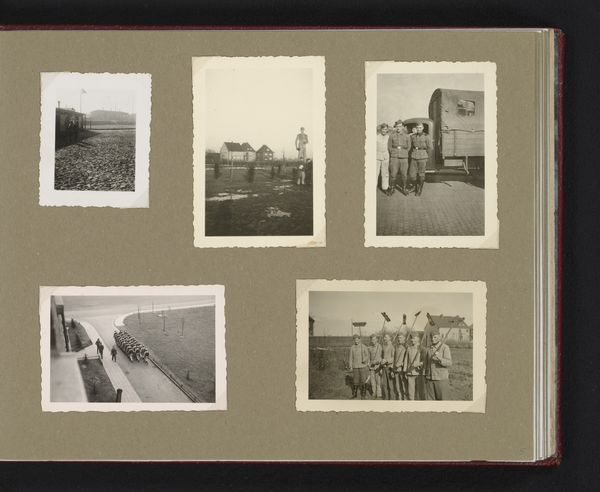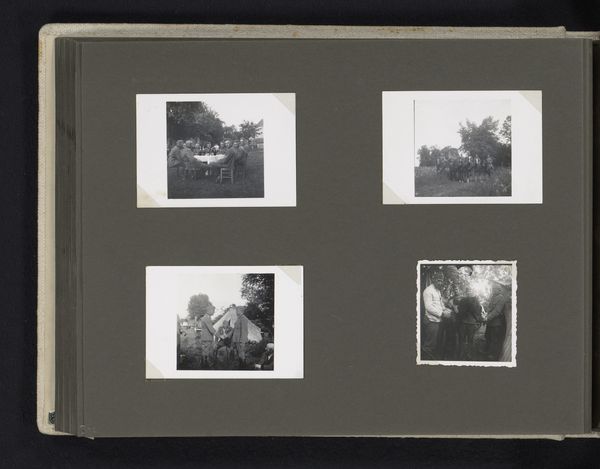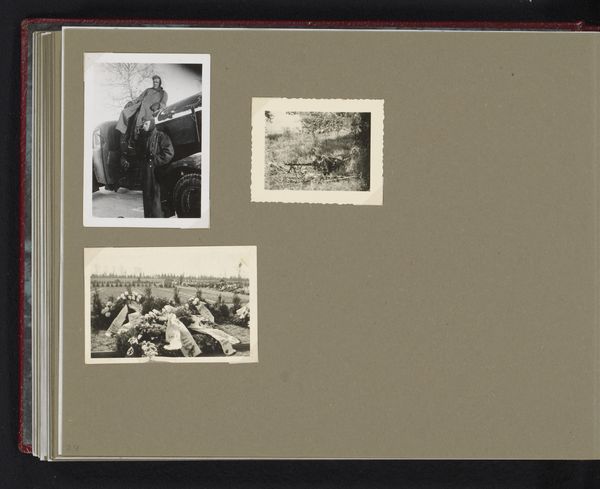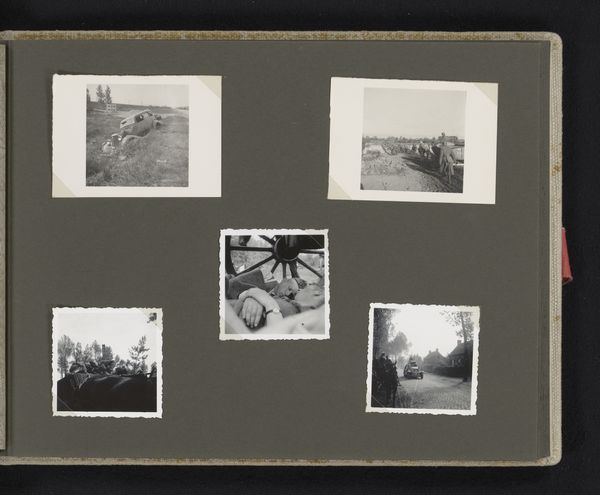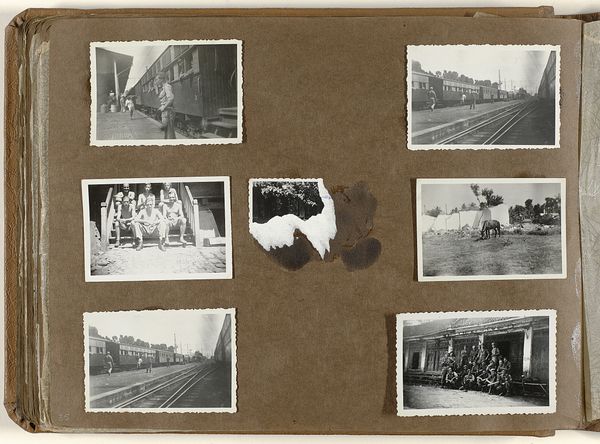
print, photography, gelatin-silver-print
# print
#
war
#
landscape
#
photography
#
gelatin-silver-print
#
cityscape
#
history-painting
#
realism
Dimensions: height 60 mm, width 90 mm, height 223 mm, width 245 mm
Copyright: Rijks Museum: Open Domain
Curator: This is a collection of gelatin silver prints titled "Oorlogsschade en krijgsgevangenen," or "War Damage and Prisoners of War," thought to have been created sometime between 1940 and 1945. Editor: A sobering assembly of images. Immediately, I notice the bleak greyscale palette, evoking a sense of somber observation of the consequences of war and captivity. The starkness suggests a cold, detached recording of these devastating moments. Curator: Precisely. Consider the process of creating these gelatin silver prints. The materials themselves – the light-sensitive emulsion on paper, the chemicals used for developing – become active participants in shaping our understanding of this wartime experience. Photography, originally embraced for its documentary capacity, raises essential questions here about truth and perspective. Who took the pictures? For what purpose? Editor: I'm struck by the juxtaposition of the landscape scenes alongside those depicting the prisoners. These seemingly objective landscape shots are in themselves embedded within a narrative of trauma, showing damage caused through conflict and violence—and therefore reflect deeper ideologies. The seemingly passive vistas quietly indict the forces responsible for this suffering, offering an unflinching critique of war's reach. Curator: The photographs themselves were also carefully produced and bound in what appears to be an album. The conscious act of creating such a thing gives it significance as a documentary artifact beyond simple photography. This collection is housed at the Rijksmuseum now, further emphasizing its place within a broader historical and cultural context. What journey did it take from then to now? How has its meaning shifted over time? Editor: Definitely. It provokes necessary discussions about the ethics of representation during conflict. The album invites us to confront uncomfortable truths about human suffering, the choices made in times of war, and how they affect individual lives and wider social frameworks long after those choices take place. Curator: Reflecting on the materiality alongside the context gives us a chance to consider how we consume this work – it speaks to mass-produced memory-keeping, where inexpensive photography could memorialize on a mass scale. Editor: Absolutely. Looking at these images compels me to contemplate our roles as witnesses, implicating us in this history and challenging us to create a more equitable and peaceful world going forward.
Comments
No comments
Be the first to comment and join the conversation on the ultimate creative platform.
